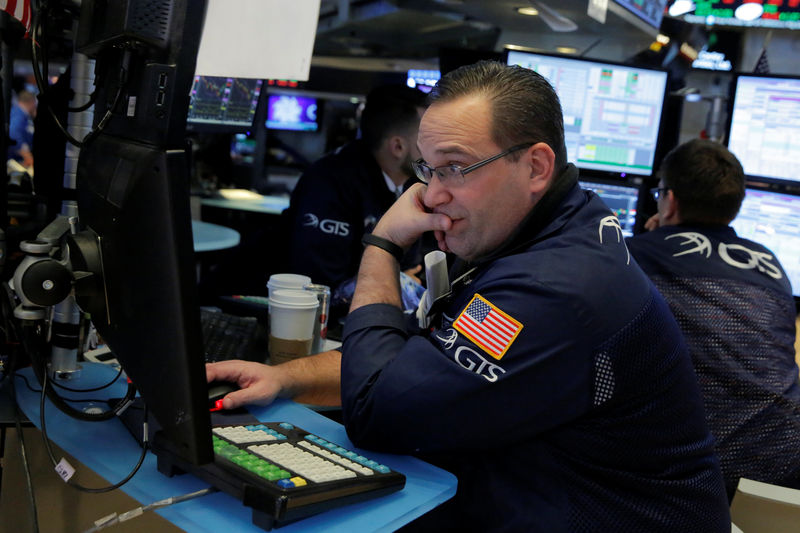By Jennifer Ablan
NEW YORK (Reuters) - Investors should brace for a possible replay of the 1987 stock market crash later this year, given this month's slump came against the backdrop of Federal Reserve interest rate hikes and rising inflation, Scott Minerd, Global Chief Investment Officer at Guggenheim Partners, said on Tuesday.
“Eventually the Fed will acknowledge that three rate hikes will not be enough, but it is going to raise rates four times in 2018, and market speculation will increase that there may be a need for five or six rate hikes. That will be the straw that breaks the camel’s back,” Minerd said in a note to clients.
On Monday Oct. 19, 1987, following large declines on Asian and European markets the previous week, the Dow Jones Industrial (DJI) Average plunged 508 points, or 22.6 percent, for the biggest-ever single day decline in percentage terms by the blue-chip benchmark.
Despite healthy U.S. corporate earnings and economic growth, inflation fears and rising bond yields, have already resulted in a 1,175 point fall in the Dow Jones Industrial Average on Feb. 5, the biggest ever in point terms, though in percentage terms it was only 4.6 percent.
The U.S. consumer price index for January published last week rose more than expected, with headline CPI inflation up to 2.1 percent, leading investors to expect the Fed to raise interest rates at least three times this year.
U.S. Treasury bond yields have been rising since last autumn, and are starting to raise the cost of borrowing for consumers and companies, with the benchmark 10-year note reaching 2.94 percent last week, up from 2.08 percent in July last year. Home mortgage rates rose to 4.57 percent last week, the highest since 2014. And the U.S. dollar (DXY) has fallen 15 percent in the past 13 months.
"Today, investors have the same sorts of concerns they had in 1987," Minerd said. By August 1987, equities were at record highs, the Fed was raising rates, the U.S. dollar was under pressure and there were increasing concerns over inflation, Minerd noted.
"The concern was the Fed was behind the curve as it accelerated rate increases," he said. "By October, things were becoming unhinged. Bond yields had risen in the face of an extended bull market in stocks. The market reached a tipping point and began its infamous slide."
As the Fed continues to raise rates this year, valuations of risk assets based upon faith in ultra-low rates and central bank liquidity will come into question, Minerd said. "Prepare for danger ahead, but also opportunity," he added.
"Anytime we see strength in economic data, we are going to see upward pressure on rates," Minerd said. "Upward pressure on rates is going to result in concern over the value of risk assets, and we are going to have a sell-off in equity markets, or the junk bond market, or both. Credit spreads will widen."
The reality of the situation is that the amount of fiscal stimulus in the pipeline, the U.S. economy fast approaching full employment, the economic bounceback in Europe, and the pickup in momentum in Japan and in China "are all real," he said.
